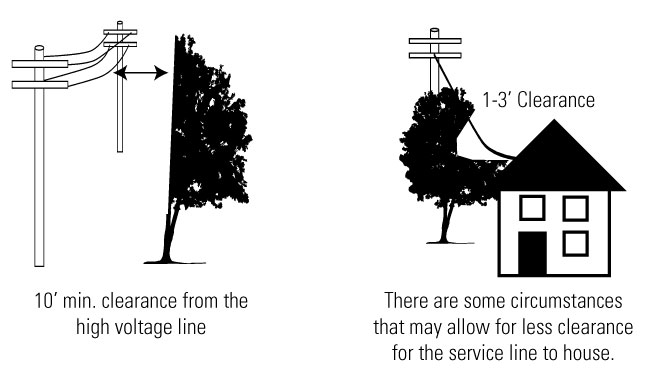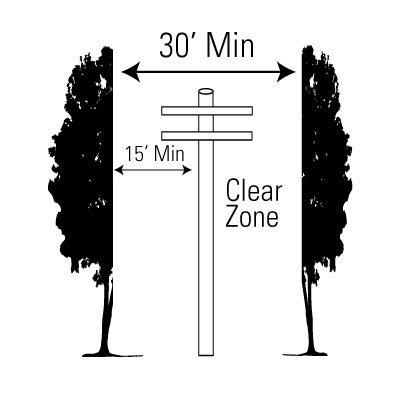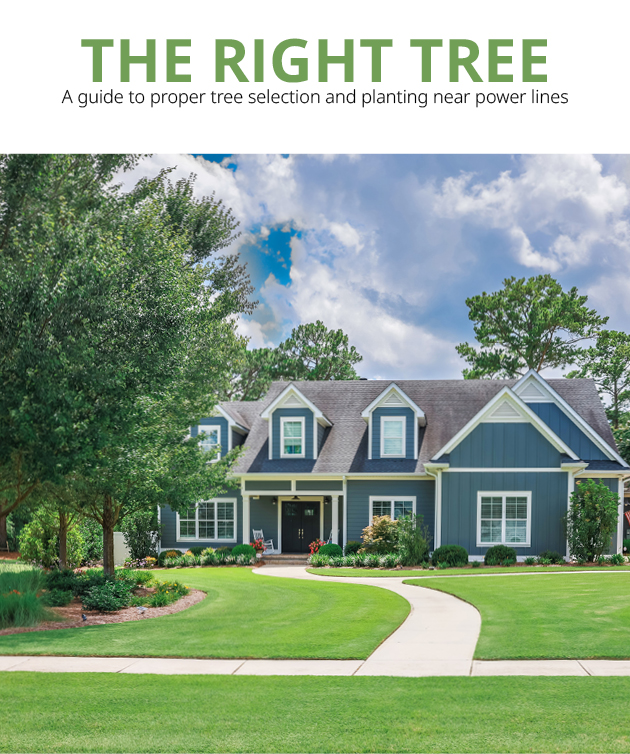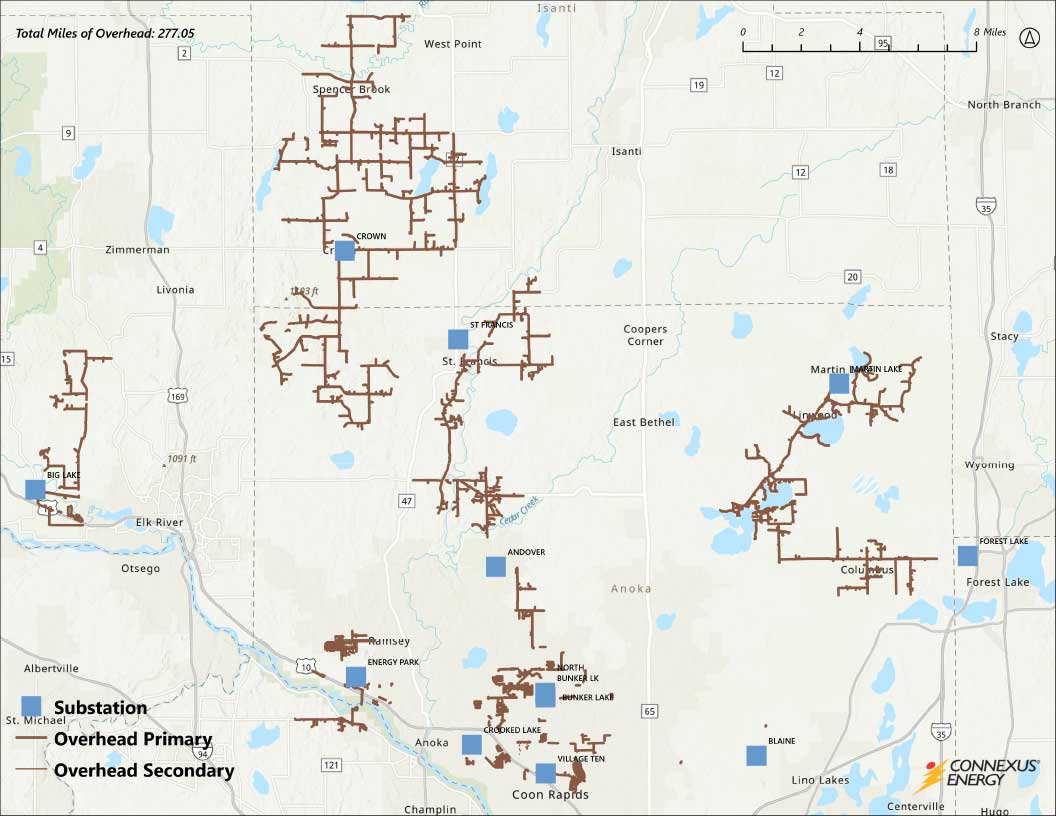-
Residential
Everything we do is for the benefit our members. We’re proud to provide a wide variety of products and services for your home, helping you save time, money and energy.
-
Business
Everything we do is for the benefit our members. We’re proud to provide a wide variety of products and services for your business, helping you save time, money and energy.
-
Contractors
Contractors
We’re dedicated to helping our members make smart energy usage decisions. We offer many informational and educational resources, programs and incentives, and energy-efficiency rebates for both business and residential members.
-
Clean Energy & EVs
Clean Energy & EVs
As part of our strategic initiatives, we are committed to environmental leadership. Pursuing renewable energy alternatives and giving members the choice to support those initiatives is the right thing to do. With a wide variety of commercial and residential programs, we will partner with you in your efforts to go green, whether at home or at work.
-
Company
Based in Ramsey, Minnesota, Connexus Energy is Minnesota’s largest consumer-owned electric cooperative, providing electricity and related products to member residents and businesses. The Connexus Energy Board of Directors, elected by our membership, governs the electric cooperative. We serve more than 147,000 members in portions of Anoka, Chisago, Hennepin, Isanti, Mille Lacs, Ramsey, Sherburne and Washington counties.
- Residential
- Business
- Contractors
- Clean Energy & EVs
- Company

Tree Trimming and Planting
Trees Are the #1 Cause of Outages
Tree and limb contact with power lines is one of the most frequent causes of outages. Members can reduce interruptions and prevent outages with proper tree selection, planting and maintenance.
Tree trimming/right-of-way maintenance
Vegetation maintenance required
The National Electric Safety Code, which sets guidelines for the safeguarding of utility workers and the general public in relation to electrical equipment, requires the maintenance of proper tree clearance in the utility easement.
Section V - general rules and conditions of service
By receiving the electric service from Connexus Energy, the member is deemed to consent to Connexus Energy’s entrance on the member’s property to trim, cut or remove trees and other vegetation, including the application of approved herbicides, as Connexus determines to be necessary for its line maintenance program.
Connexus is obligated and committed to providing safe and reliable power to our members, employees and the general public by adhering to the maintenance guidelines.
Systematic line maintenance
Connexus conducts a systematic vegetation maintenance program to provide reliable electrical service along with safe operating conditions. In order to achieve both, routine vegetation activities are completed on a regular maintenance cycle of approximately every five to eight years.
2025 scheduled routine maintenance tree trimming cycle
-
Andover
-
Big Lake
-
Blaine/Coon Rapids
-
Columbus
-
Coon Lake
-
Dayton (northern portion)
-
Lindwood Lake
-
Martin Lake
-
Nowthen
-
St Francis Crown/Spencer Brook
Vegetation map index: all circuits
Connexus will trim, cut or remove the tree that, in its judgment, may cause an interruption in service, endanger Connexus electric lines, present a safety hazard. Connexus may also utilize approved herbicides in its line maintenance program. Connexus will make a reasonable effort to inform members of its line maintenance program prior to starting the work.
Where possible, offending trees shall be removed entirely. Tree trimming must provide at least 10 feet of clearance from Connexus’ conductors, provided, however, that Connexus reserves the right to trim, cut, or remove trees farther than 10 feet from Connexus Energy’s conductors, if Connexus determines that this additional clearance is necessary to accomplish the purposes of its line maintenance program. Any tree trimming, cutting or removal shall conform to any recorded easements.

What to Expect
1. Automated phone message
If your property falls within the systematic routine vegetation maintenance schedule, you will receive an automated phone message from Connexus with the name and phone number for the certified tree inspector that will be working in your neighborhood.
2. Door hanger with instructions
After your trees have been evaluated by the contracted tree inspector, you will receive a notice on your door with details of the work to be done if trimming is required. To avoid delays, please thoroughly review the door hanger and respond to your tree inspector in a timely manner according to the instructions.
3. Disposal of brush
Connexus will dispose of the brush generated from the scheduled maintenance trimming and leave on site wood greater than four inches in diameter cut into manageable lengths. Any dead or diseased tree debris is the property owner’s responsibility to discard of, in accordance with state or local guidelines.
Non-scheduled tree maintenance
Member request
If you are concerned that branch or a tree is too close to a power line, call us to inspect the vegetation clearance. Do not go near or touch a tree touching a power line. In such cases where a property owner request a tree or branch removed, and Connexus’ electric wires present an obstacle, Connexus will assess and solely determine which action to take, during regular working hours, (1) remove the lines temporarily while the work is being done by the owner or their licensed tree contractor, or (2) trim the tree/branch to an approved distance from the power line leaving the remaining portion of the tree and the clean-up work to be done by the owner; in both cases, no charge will be assessed to the owner.
Storm damaged trees
If trees have been damaged by a storm, cutting and trimming will be done at the discretion of Connexus in order to remove the danger and repair the lines. Clean-up work and any yard damage, including ruts from equipment or damage to other trees resulting from falling limbs/trees, shall be the responsibility of the property owner/member.
Member-owned
Connexus is not responsible for the following:
- Trimming or removal of trees that endanger the owner’s own lines located beyond the point of service.
- Trimming and/or removing shrubs to gain access to pad-mount equipment on a utility easement. Please review planting guidelines near transformers.
Disposing diseased ash trees
Emerald ash borer (EAB) is an invasive insect that infests and kills ash trees, generally within one to three years. We have noted an ever-increasing presence of EAB in the Connexus service area. D-shaped exit holes help confirm infestation, but the holes are small and typically high on the tree. EAB larvae are worm-like and live underneath the tree bark. Adults are iridescent green beetles that emerge from the exit holes to fly to new trees to infest.
Review the Minnesota Department of Agriculture’s Does My Tree have Emerald Ash Borer? identification document if you suspect an infestation. Please report EAB to Report the Pest or call 888.545.6684.
Connexus members are responsible for the safe removal and disposal of diseased trees and wood. Connexus does not dispose of any dead or disease tree debris of any species. MDA is working to minimize the spread of EAB and maintains a list of ash tree waste disposal sites in Minnesota counties.
For more information on EAB:
Minnesota Department of Natural Resources
Minnesota Department of Agriculture
Tree planting
Where to plant
The right tree planted in the right location provides environmental, economic and aesthetic benefits for the property owner and the community. To maintain the beauty of your landscaping, public safety and reliability of electric service, it’s important to ensure that any tree planting does not interfere with any overhead or underground utility lines.
 A minimum 15-foot clear zone is required on both sides of the utility pole. Tree height and width at maturity must be considered before digging the planting hole to ensure the tree will not grow into the power line route (clear zone).
A minimum 15-foot clear zone is required on both sides of the utility pole. Tree height and width at maturity must be considered before digging the planting hole to ensure the tree will not grow into the power line route (clear zone).
Call Before You Dig state and federal laws require marking of all underground utilities before any excavation. Regardless of where you are planting, call Gopher State One Call to request a locate several days before digging. Call 811 or 1.800.252.1166. Facility marks are valid for 14 calendar days.
The right tree
 The Right Tree: A Guide to Proper Tree Selection and Planting Near Power Lines is an informative booklet covering tree size, location, species and care. It includes expert information from the University of Minnesota Extension and the Minnesota Landscape Arboretum. Download a copy of The Right Tree.
The Right Tree: A Guide to Proper Tree Selection and Planting Near Power Lines is an informative booklet covering tree size, location, species and care. It includes expert information from the University of Minnesota Extension and the Minnesota Landscape Arboretum. Download a copy of The Right Tree.
Certain species of trees, both deciduous and coniferous, are better for planting near power lines, some of which can be found in both shrub and tree form. Nursery professionals can help determine the best options, which may include:
- American Smoketree
- Cherry – Pin or Sargent
- Dogwood – Pagoda or Grey
- Flowering Crabapple
- Lilac – Japanese, Peking, or Dwarf Korean
- Magnolia – Star or Loebner
- Nannyberry Viburnum
- Panicle Hydrangea
- Plum – Princess Kay or American Redbud
- Serviceberry – Apple or Allegheny
- White Fringe Tree
Help our butterflies, hummingbirds, honey bees, and bats
Plant flowering shrubs, wildflowers and native grasses to give pollinators food and nesting sites so they can transfer pollen to create fruits, nuts and flowers.
Here are great resources for creating pollinator-friendly spaces:

Contact Connexus Energy
Get in touch with Connexus Energy. Call, email, stop in, or fill a form with your questions and feedback.

